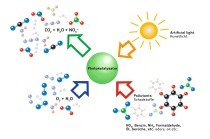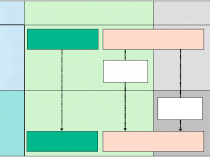Less nitrogen oxides, more beautiful surfaces
Compliance with the limits set by the EU for nitrogen oxides is still posing a challenge for cities and municipalities. Contrary to measures such as driving bans, which have a negative impact on citizens and businesses, photocatalytically active construction products reduce the concentration of nitrogen oxides by converting the pollutant gas into nitrate. As a result, an increasing number of cities use not only photocatalytically active pavers but also other types of road surfaces such as concrete and asphalt pavements.
A special type of titanium dioxide added to the construction product acts as photocatalyst. As the reaction takes place at the surface, usually only the facing of pavers is enriched with the substance. Exposure to light, wind conditions and surface properties have an influence on the photocatalytic degradation of nitrogen oxides. Façades and roofs equipped with photocatalytic products enable the active surface to be enlarged and the degradation of nitrogen oxides to be increased.
A self-cleaning effect is yet another positive quality of photocatalytic surfaces. The surfaces are capable of degrading thin layers of organic contaminants. Water is spread on the surface forming a film which enables dirt particles to be better washed away and removed together with the precipitation – an effect that works best on surfaces with an increased slope angle such as façades or roofs.
There have been standards in place in Europe to date to determine the photocatalytic action but there have been no consistent quality standards for photocatalytically active products. In collaboration with independent research institutes, the Federation for Applied Photocatalysis (Fachverband angewandte Photokatalyse = FAP) has drawn up a regulation defining a threshold value for the NO degradation performance of photocatalytically active products and laid it down in a voluntary commitment. By doing so, the Federation wishes to contribute to improved air quality while at the same time increasing transparency for the consumer.






